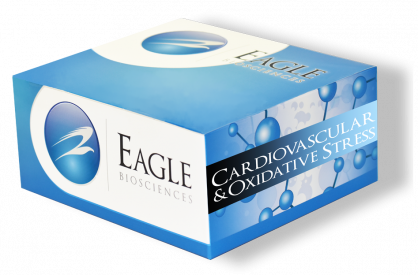Mouse IL-25 ELISA Assay
The Mouse IL-25 ELISA Assay is For Research Use Only
Size: 1×96 wells
Sensitivity: 15 pg/mL
Dynamic Range: 31.25 – 2000 pg/mL
Incubation Time: 3.5 hours
Sample Type: Serum, Plasma, Cell Culture
Sample Size: 100 µl
Alternative Names: Interleukin 25, Interleukin 17E, IL-17E
SAMPLE COLLECTION AND STORAGE
1. Cell Culture Supernates – Remove particulates by centrifugation.
2. Serum – Use a serum separator tube (SST) and allow samples to clot for 30 minutes before centrifugation for 15 minutes at approximately 1000 x g. Remove serum, avoid hemolysis and high blood lipid samples.
3. Plasma – Recommended EDTA as an anticoagulant in plasma. Centrifuge for 15 minutes at 1000 x g within 30 minutes of collection.
4. Assay immediately or aliquot and store samples at -20°C. Avoid repeated freezethaw cycles.
5. Dilute samples at the appropriate multiple (recommended to do pre-test to determine the dilution factor).
Note: Normal mouse serum or plasma samples are suggested to make a 1:2 dilution.
Assay Background
IL-25 (also known as IL-17E) is a member of the IL-17 family of proinflammatory cytokines, which includes IL-17A, IL-17B, IL-17C, IL-17F and IL-17A/F. IL-17E is found at low levels in various peripheral tissues. It is a proinflammatory cytokine that promotes airway eosinophilia in mice. IL-17E plays a role in Th2 type inflammatory diseases, such as asthma and atopic dermatitis. IL-25 induces elevated gene expression of IL-4, IL-5 and IL-13 in multiple tissues and results in T helper 2 (TH2)-type immune responses (increased serum IgE levels) and pathologic changes in the lungs and digestive tract with eosinophilic infiltrates, increased mucus production, epithelial cell hyperplasia and overall amplified allergic inflammation. IL-25 shares the receptor IL-17RB with IL-17B, although it binds with much higher affinity than IL-17B.
Related Products
Mouse IL-23 ELISA Assay Kit
Mouse IL-6 ELISA Assay
Mouse IL-10 ELISA Assay


